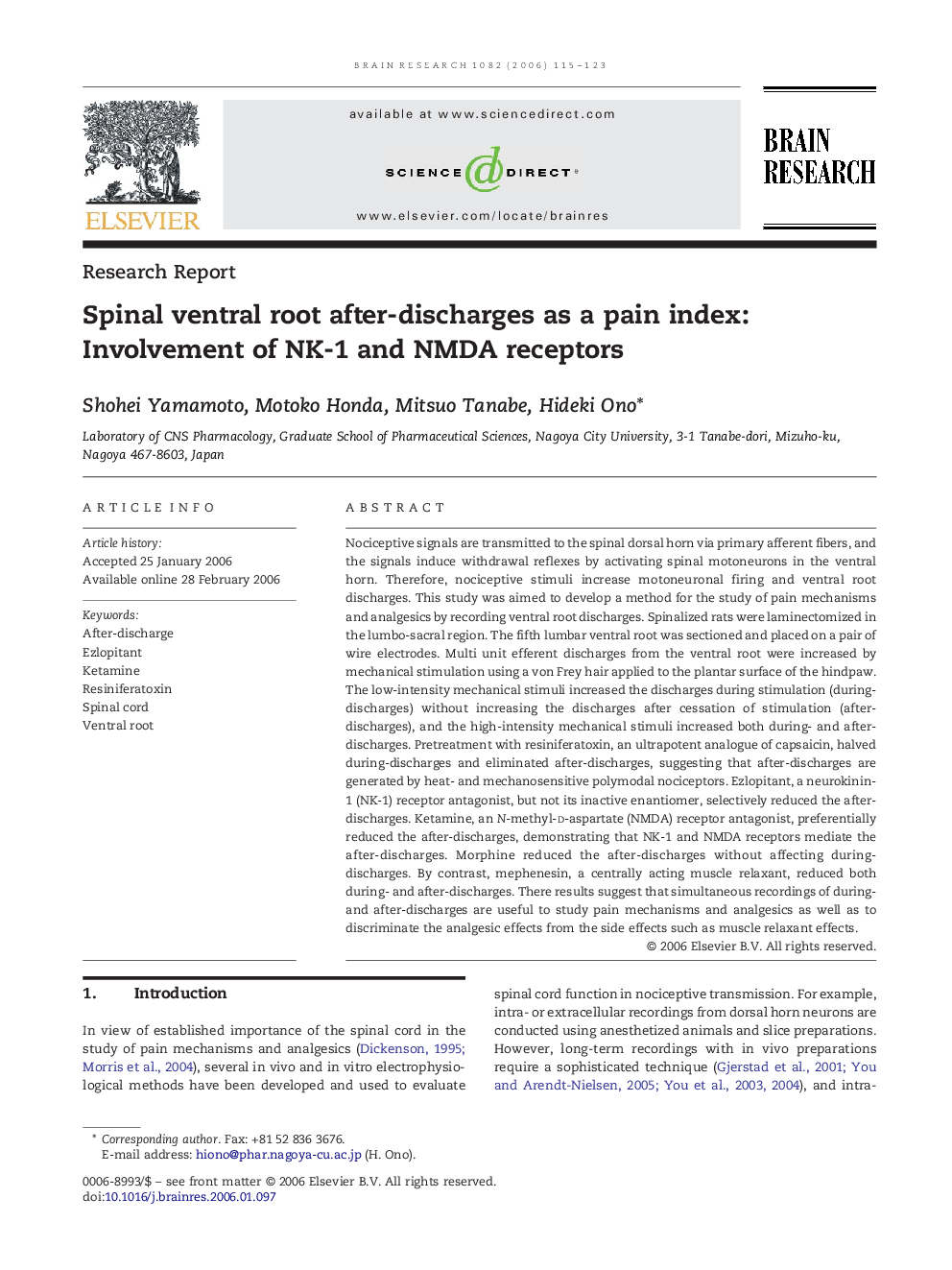| کد مقاله | کد نشریه | سال انتشار | مقاله انگلیسی | نسخه تمام متن |
|---|---|---|---|---|
| 4333141 | 1292922 | 2006 | 9 صفحه PDF | دانلود رایگان |

Nociceptive signals are transmitted to the spinal dorsal horn via primary afferent fibers, and the signals induce withdrawal reflexes by activating spinal motoneurons in the ventral horn. Therefore, nociceptive stimuli increase motoneuronal firing and ventral root discharges. This study was aimed to develop a method for the study of pain mechanisms and analgesics by recording ventral root discharges. Spinalized rats were laminectomized in the lumbo-sacral region. The fifth lumbar ventral root was sectioned and placed on a pair of wire electrodes. Multi unit efferent discharges from the ventral root were increased by mechanical stimulation using a von Frey hair applied to the plantar surface of the hindpaw. The low-intensity mechanical stimuli increased the discharges during stimulation (during-discharges) without increasing the discharges after cessation of stimulation (after-discharges), and the high-intensity mechanical stimuli increased both during- and after-discharges. Pretreatment with resiniferatoxin, an ultrapotent analogue of capsaicin, halved during-discharges and eliminated after-discharges, suggesting that after-discharges are generated by heat- and mechanosensitive polymodal nociceptors. Ezlopitant, a neurokinin-1 (NK-1) receptor antagonist, but not its inactive enantiomer, selectively reduced the after-discharges. Ketamine, an N-methyl-d-aspartate (NMDA) receptor antagonist, preferentially reduced the after-discharges, demonstrating that NK-1 and NMDA receptors mediate the after-discharges. Morphine reduced the after-discharges without affecting during-discharges. By contrast, mephenesin, a centrally acting muscle relaxant, reduced both during- and after-discharges. There results suggest that simultaneous recordings of during- and after-discharges are useful to study pain mechanisms and analgesics as well as to discriminate the analgesic effects from the side effects such as muscle relaxant effects.
Journal: Brain Research - Volume 1082, Issue 1, 12 April 2006, Pages 115–123